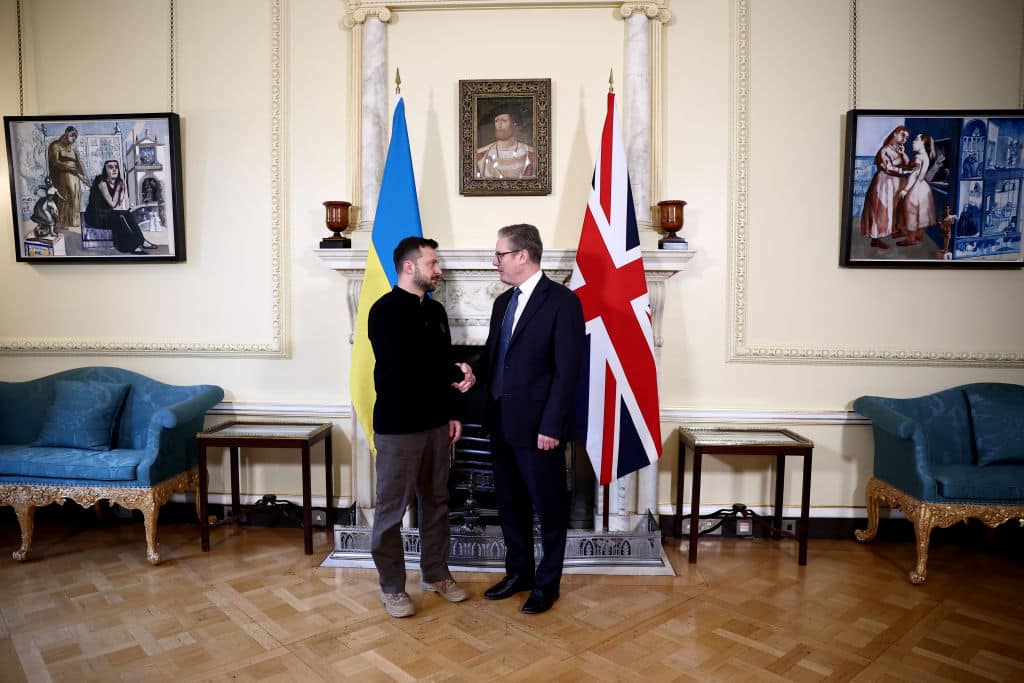Queen Elizabeth I and Sir Walter Raleigh have gone the same way as William Ewart Gladstone and Margaret Thatcher at No 10 Downing Street, the residence of the British Prime Minister.
Paintings of the first two are no longer hanging at No 10, with both replaced by paintings by Dame Paula Rego, the late Portuguese-born artist. While Rego eventually made the UK her home and Portugal is the UK's oldest ally, the replacement of the paintings depicting key figures from British history in a room used for prime ministerial meetings with world leaders has drawn criticism from Starmer's political opponents, <a href="https://www.telegraph.co.uk/politics/2024/10/13/starmer-removes-paintings-queen-elizabeth-i-walter-raleigh/"><mark style="background-color:rgba(0, 0, 0, 0)" class="has-inline-color has-vivid-cyan-blue-color">notes</mark></a> the <em>Daily Telegraph</em>.
British Catholics may have similar concerns about what it says about the Prime Minister's and Labour’s approach to British history – Starmer faced similar criticism after his earlier removal of portraits of Gladstone and Thatcher after coming to office – though they may be as interested in the use of an artist who had a fraught relationship with the Catholic Church.
Rego always said that her art was “anti-clerical” as opposed to being “anti-religious” or anti-Catholic.
Her two paintings that have gone up in Downing Street are <em>Study for Crivelli’s Garden</em> and <em>Study for Crivelli’s Garden (The Visitation)</em>.
<em>Study for Crivelli’s Garden</em> is an acrylic painting produced between 1990 and 1991, which shows a woman praying as a second woman directly behind her holds some sort of item to the back of the praying woman that might be a knife or weapon – in the foreground a parallel though much small figure appears to be holding what looks more like a knife, while a disembodied flailing hand suggests someone who may have just been stabbed.
<em>Study for Crivelli’s Garden (The Visitation)</em> is a retelling of the Visitation story in the Bible, in which the Virgin Mary, pregnant with Jesus, visits her cousin Elizabeth, who realises she is pregnant with John the Baptist. In Rego’s rendition, the figure representing Elizabeth can be seen grabbing the arm of the figure representing Mary while with her other hand covering her mouth.
As with many of Rego’s paintings, both artworks chosen for No 10 conjure a strange, unsettling sense – “unsettling” is a word often used to describe Rego’s art.
Throughout her career that was lauded both by the art establishment and by much of the media, Rego continued to explore anti-clerical themes.
Her series of paintings called “The Firemen of Alijo” is known for showcasing Rego’s use of satire to critique the Church’s role in Portuguese society.
The paintings depict firemen – usually associated with heroism and protection – instead engaged in mundane and ambiguous if not suspect tasks, such as shaving a dog’s throat or wrestling a girl to the ground.
These works reportedly sought to highlight the ways in which the Church’s influence could stifle individual freedom and creativity.
Rego also became known as a strong supporter of abortion access, arguing that the anti-abortion movement “criminalises women”, while describing the anti-abortion drive in the US as "grotesque", <a href="https://www.theguardian.com/artanddesign/2019/may/31/paula-rego-calls-us-anti-abortion-drive-grotesque"><mark style="background-color:rgba(0, 0, 0, 0)" class="has-inline-color has-vivid-cyan-blue-color">reports</mark></a> the <em>Guardian</em>.
Her series of artworks featuring “Dog Women” in the 1990s, which depicted women in crouching, snarling positions, reportedly challenged traditional representations of femininity and sought to explore complex power dynamics between women, men and institutions such as the Catholic Church.
Downing Street has said the artwork changes were actually drawn up under the previous government, reports the <em>Telegraph</em>.
It notes a spokesperson saying: "The change of artwork is long planned, since before the election, and is timed to mark 125 years of the Government Art Collection."
Rego's concerns with clericalism and associated mistakes made by the Church, have been a feature of the papacy of Pope Francis, who has been a <a href="https://catholicherald.co.uk/synodality-isnt-democratic-rather-it-involves-grace-and-discernment-pope-clarifies-in-newly-released-comments/"><mark style="background-color:rgba(0, 0, 0, 0)" class="has-inline-color has-vivid-cyan-blue-color">strong critic of clericalism</mark></a>.
When the Pope spoke to Jesuits in East Timor on 10 September, during his extended trip around Southeast Asia, Francis warned against “clericalism” and said that it is “is everywhere".
“For example, there is a strong clerical culture in the Vatican, which we are slowly trying to change. Clericalism is one of the most subtle means the devil uses,” he said.
“Clericalism is the highest form of worldliness within the clergy. A clerical culture is a worldly culture. That’s why St. Ignatius insists so much on examining worldliness, the spirit of the world, because our sins, especially for frontier men, will be there, in these spheres; in intellectual worldliness, in political worldliness,” Francis added.
“In my opinion, for you, for us priests, this spiritual worldliness is the most difficult disease to overcome,” he said.
When Sir Keir Starmer was elected UK Prime Minster in July, it marked the first time the country had an <a href="https://catholicherald.co.uk/its-right-to-congratulate-sir-keir-and-to-pray-he-works-with-the-churches-and-not-against-them/"><mark style="background-color:rgba(0, 0, 0, 0)" class="has-inline-color has-vivid-cyan-blue-color">openly atheist prime minister</mark></a>.
As the <em>Herald</em> noted at the time, what matters more than the Prime Minister's personal take on God and religion, which he is of course entitled to have, "is that he should work with the churches rather than against them, and value the real contribution they make, socially as well as spiritually".
<em>Photo: Britain's Prime Minister Keir Starmer greets Ukraine's President Volodymyr Zelensky during a bilateral meeting inside 10 Downing Street, flanked by the two paintings of Dame Paula Rego, London, England, 10 October 2024. (Photo by Henry Nicholls - WPA Pool/Getty Images.)</em>



